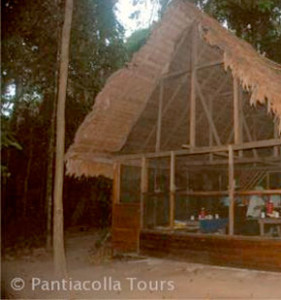About the lodge


Wildlife
This is Manu’s most pristine rainforest, and in order to keep it this way, only a restricted number of agencies are allowed to take visitors in. Lake Salvador is the biggest oxbow lake of the Manu basin and has a permanent group of the, by now very rare, 2m long Giant Otter. The lake also houses about 200 caiman, most common are the White and the Black Caiman, but you can also find the rare Smooth-fronted Caiman. Visiting the lake on a floating platform shows you many water birds, the pre-historic looking Hoatzin or “Punk Bird”, Red-capped Cardinals, Neotropic Cormorant, Muscovy Duck, Horned Screamer, Agami Heron, oropendulas, flycatchers and so on. Lake Otorongo, another oxbow lake nearby, has a 20 m high tower, that takes you to halfway through the trees and a wide view over the lake. This lake has much more floating vegetation than the first one, immediately changing the composition of the bird community. Here a common bird is the Wattled Jacana, also called “Jesus Bird” for its habit to walk over the vegetation floating on the water. Special is when you meet a monkey group at eye level!
What you can do there
There are several trails you can hike to find wildlife, though in reality you could also just stay at the Campsite and wait for the animals to pass through! You can visit two lakes, Cocha Salvador, the biggest one on a floating platform, and Cocha Otorongo, the smaller one from the20 m high observation tower on its shores. Night hikes show you a stunning insect biodiversity! Or you return to Cocha Salvador’s floating platform to look for caiman with your flashlight.
Campsite Sachavaca offers you safe and basic accommodation, from where you can explore the magical world of a pristine rainforest.



